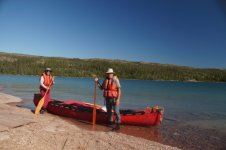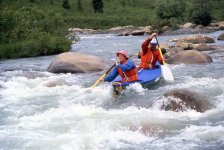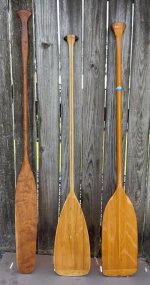I always have two canoe paddles with me (and if tandem, two more for them) but the two I bring depend on the canoe and the conditions. Whichever paddle doesn't break is the spare.* 
Sport solo 13.5' - river or flat water: Wood - straight lightweight & wood - straight dependable
Touring solo 14.75' - flat water: Wood - straight lightweight & carbon - bent dependable
Tandem 16.0' - river or flat water: Wood - straight dependable & carbon - bent lightweight
Tandem 18.5' - flat water: Carbon - bent lightweight & carbon - bent dependable
* I don't do tough multiple day trips anymore so I don't rely on a true spare paddle.
Sport solo 13.5' - river or flat water: Wood - straight lightweight & wood - straight dependable
Touring solo 14.75' - flat water: Wood - straight lightweight & carbon - bent dependable
Tandem 16.0' - river or flat water: Wood - straight dependable & carbon - bent lightweight
Tandem 18.5' - flat water: Carbon - bent lightweight & carbon - bent dependable
* I don't do tough multiple day trips anymore so I don't rely on a true spare paddle.
Last edited:




